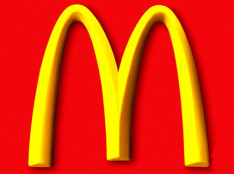Marketing science expert tells brands to forget focus groups as ‘no good will come of it’

Jenni Romaniuk
Marketers must stop asking consumers to help shape key elements of the brand as they will risk losing “distinctive assets” that can make the product stand out in a cluttered market, a conference has heard.
Jenni Romaniuk, research professor and associate director at marketing institute Ehrenberg-Bass, said brands must not get hung up on what a colour means to people, or what is popular, as she argued that “uniqueness” is a critical element of marketing.
Choosing a look, colour and tagline must be based on what will stand out in a sea of product on store shelves, she said, and not necessarily what consumers like.
Speaking at MSiX – Marketing Sciences Ideas Xchange – conference in Sydney yesterday, Romaniuk warned marketers that “nothing good” will come from consumer focus groups as they can often provide ill-informed advice.
“One thing people get caught up with over distinctive assets is the meaning of the asset type – what does a colour or phrase mean?,” she told delegates. “The danger with this is that it misses the big issue with distinctive assets, which is that you want to be able to stand out in the context [of look-a-like products].”
“Don’t worry about whether people like white or green or whether green means organic. The more you take those things into account the more you’re going to become similar to other brands, rather than distinctive.
“Colour is one of the most important aspects of a brand. I had a client who said they had a really strong colour on the shelves and were going to give it up because they ran a focus group where someone told them the colour was a bit old fashioned.
“I told them not to do that.”
She told the conference: “Don’t run focus groups about distinctive assets – no good will come of that.”
Romaniuk also warned marketers not to dilute their core brand by launching too many “variants”. Consistency is the key, she said, describing every exposure of the brand as a “do or decay moment”.
“If you’re not consistent it’s not just a missed opportunity, you’re weakening the links that are there if you start fragmenting your colour range,” she said, citing an example in South Africa where McDonald’s strayed from its iconic yellow to create purple arches.
“One of the biggest problems is when people produce strawberry flavours or a special organic version of the product where they radically changed from the parent brand’s asset but keep the brand name. You’re eroding the links.
“By working out how you are going to distinguish the variant from the parent brand, you are solving the wrong problem.
“The biggest problem you face is people finding your brand. You should always think parent brand first, variant second. But usually people look at them in isolation and think ‘how do I make sure someone doesn’t pick up my parent brand by mistake instead of my variant’.”
Romaniuk told delegates to give significant exposure to the brand name itself, something marketers are often reluctant to do in the false belief it puts consumers off.
She said there is no evidence to suggest a correlation between a TV ad’s likeability and the amount of exposure the brand is given on the ad.
“There’s no need to be afraid of using the brand,” the research professor said. “Some people still shy away from using the brand name in communications but I’ve looked for evidence, and I’ve yet to find it, of people liking an ad more where there is less branding.”
She also concluded that video ads can go viral with or without overt branding, with heavily branded content perfectly able to “arouse high positive emotions which is the key driver of sharing”.
“There is no reason not to use the brand name. Let’s stop being afraid of it – it’s not doing our advertising any good.”
Steve Jones





“Some people still shy away from using the brand name in communications but I’ve looked for evidence, and I’ve yet to find it, of people liking an ad more where there is less branding.”
Agree. Too often I am laughing at the end of the ad or turning to someone else in the room – and completely miss the only brand exposure on the ad. What a waste.
Sensibly inject the brand into the whole ad.
User ID not verified.